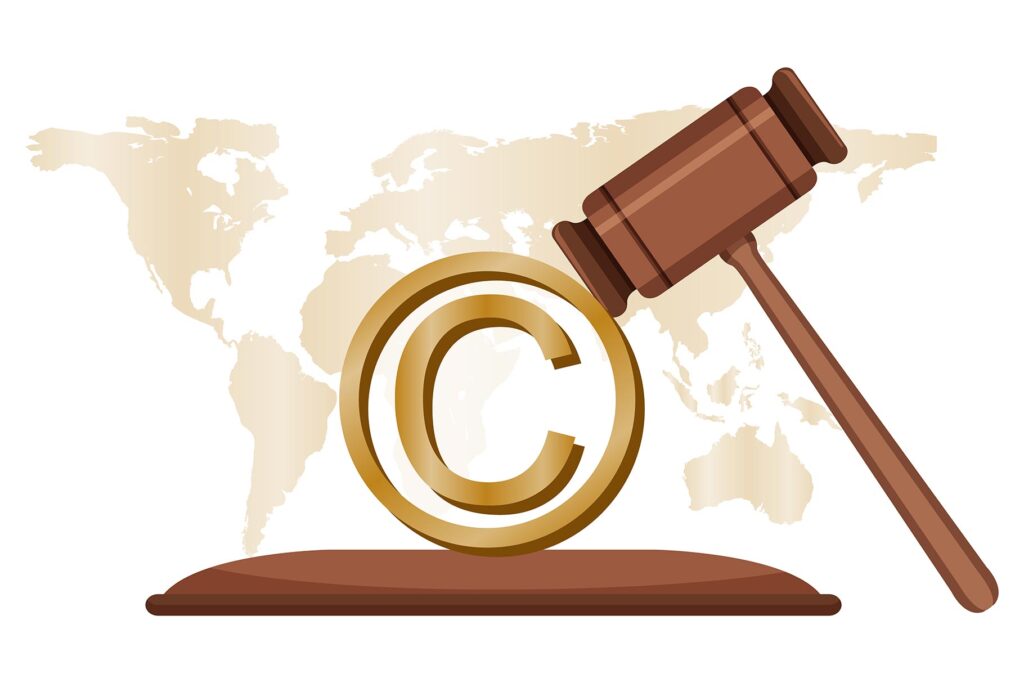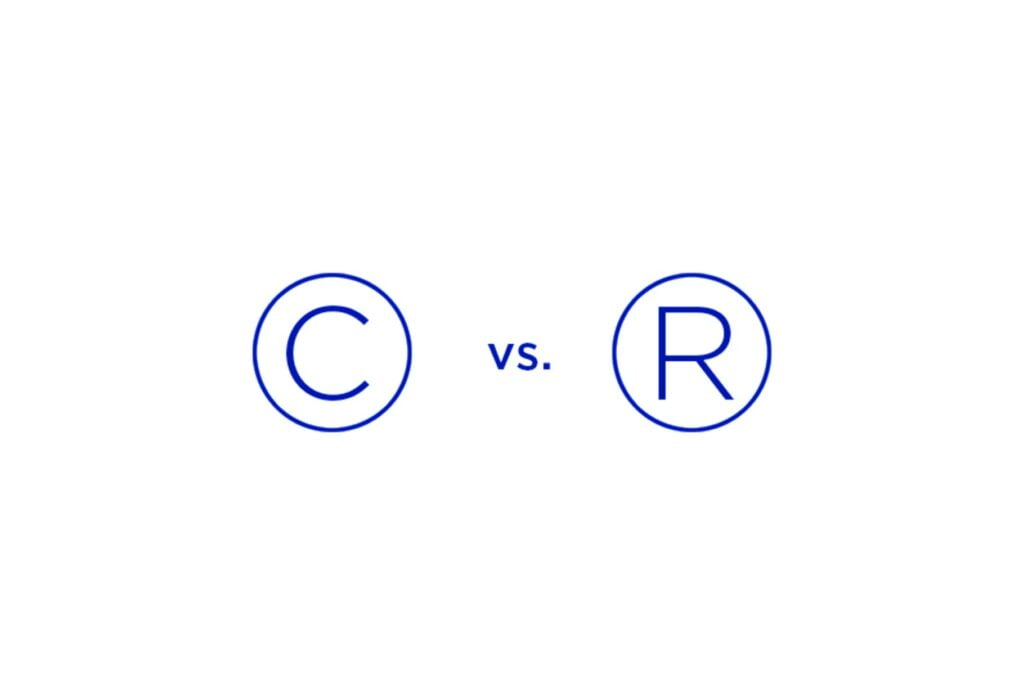If you’re a business owner, it’s important to understand the difference between copyrighting and trademarking a logo. Both are forms of intellectual property protection, but they serve different purposes and have different limitations.
Your logo is one of the most important assets of your business. It’s what makes people remember you, and it’s often the first thing that comes to mind when someone thinks about your brand.
Your logo is also a form of intellectual property, which means that it can be protected by copyright and trademark laws.
While the terms are used interchangeably, there are some key differences between them.
If you’re not sure whether or not your logo is eligible for protection, this post will help you answer that question. It will also show you how to copyright and trademark a logo—and why it’s important to do so.
To learn more about these protections and how they can help protect your business’s assets, read on!
What is a Trademark?

A trademark is a distinctive mark or symbol used by a company to identify its products and distinguish them from the competition.
The trademark owner can be an individual, business, or other organization. It can also be any combination of these things. Trademarks are used to protect the goodwill and reputation of a brand.
This is important because it prevents others from using your mark as their own—either intentionally or unintentionally—and creates an incentive for consumers to continue buying from you rather than someone else.
In other words, the trademark protects your logo and brand identity from being used by competitors and prevents others from profiting off your hard work.
What is a Copyright?

A copyright is a form of intellectual property that protects original works of authorship. It covers literary, dramatic, and musical works; artistic works such as paintings, sculpture, and photography; and architectural designs.
A logo is an example of a copyrighted work. The owner has the exclusive right to reproduce, distribute, and display the logo. In other words, you can only use it if you’re licensed by that person or company.
If your logo is copyrighted and someone uses it without your permission, then they could be sued for copyright infringement.
The copyright protects your logo from being used by someone else. In fact, even if you don’t want to sue them, you can still ask that person or company to stop using your logo.
You may also like 15 Best Luxury Fashion Logos and Their Concept
Copyright vs. Trademark

You can copyright and trademark logos in the same way, but it’s important to know the difference between them.
A copyright protects the creative work you’ve created. It prevents others from using your logo without permission and allows you to stop them if they do use it without permission.
A trademark protects a name or word that identifies a brand or company, such as Apple or Coca-Cola (the actual names).
Trademarks help consumers identify which products come from which companies because they’re recognizable by sight alone–you don’t need any text associated with them at all!
If you want both protections for your logo design, then make sure that each element within the design has its own copyright (if possible) before registering anything with the government body as a trademark registration application form.
Which Protection to Use When?
The question of whether or not you should use both copyright and trademark protection for your logo depends on a few factors. If the logo is not yet being used, then copyrighting it will be sufficient.
However, if your company has already been using this particular design for some time and has even gained recognition for it, then trademarking would be more beneficial in order to protect yourself from competitors who may try to copy your image.
As an example of this scenario: let’s say that we have two similar logos–both featuring words written in blue letters with white outlines against a black background–but one was designed by an artist while another was created by using stock photos off Google Images (or something similar).
In this case, both companies could technically claim ownership over their respective designs due to their originality (i.e., no one else had ever thought up such things before), but only one would truly benefit from protecting them through copyrights and trademarks respectively—because theirs were already well known among the public at large.
Why Register A Trademark?
If you’ve got a unique logo for your business, it’s important to register a trademark. Trademarks give you the legal right to stop others from using your logo or brand name in their own work.
This can be especially helpful if someone steals your design and tries to sell it as their own, or if they try and pass off their product as yours.
Registering a trademark will also help protect against copyright infringement; if someone is infringing on your copyright by using an image that looks similar but isn’t exactly identical (such as when another company uses an image with similar colors), then registering a trademark allows them access to legal action against those who are infringing on their intellectual property rights.
The last reason why registering trademarks is important is that they can act as evidence of ownership over something–this is especially true when dealing with designs such as logos where there may not be any physical object being produced by which ownership could otherwise be proven by other means (e.g., serial numbers).
What a Trademark Doesn’t Protect
Trademarks do not protect the name of your business, product, or service. They also don’t protect slogans or domain names.
Trademarks are only applicable to logos that are used in commerce, so if you’re just starting out and don’t have any money to pay for a trademark yet, it’s okay! You can still file an application with the U.S. Patent & Trademark Office (USPTO).
The following types of logos are not protected by trademark:
- Generic: Generic trademarks are not eligible for trademark protection. They’re considered too common and include words like Milk, Apple, and Orange. Descriptive: Descriptive trademarks describe the product or service being sold. For example, “fast food” isn’t eligible for trademark protection because it describes what you do (i.e., sell fast food). However, if you were to create a logo that was just a picture of an apple with no text at all
- Compliant with the fair use of doctrine: The fair use of doctrine is a legal exemption that allows you to use someone else’s trademark in certain cases. For example, it’s okay to use a competitor’s mark in an editorial context (such as news articles) or when it’s part of a parody.
Also, read 10 Do’s and Don’ts of Creating Logo Slogan (Ultimate Guide)
How to Copyright a Logo
Copyrighting a logo is much like copyrighting any other piece of art, with the exception that it’s easier and cheaper than most people think.
To get started, you’ll need to fill out an application form and pay $35-85 in fees (the amount may vary depending on what state you live in).
Once your application has been accepted by the US Copyright Office, it will take about two weeks before they send back their official certificate of registration with their seal on it–and voila! You have officially copyrighted your logo!
How to Trademark a Logo
Trademarking a logo is a relatively simple process. To trademark a logo, you must first register your brand with the USPTO (United States Patent and Trademark Office).
To do this, you will need to file an application for trademark registration with them. You can do this by yourself or hire an attorney to help guide you through the process.
Once registered, it’s important that all companies protect their trademarks by monitoring their competitors’ use of similar logos in order to avoid confusion among consumers or infringement claims against them by another company using similar branding techniques as yours.
The trademark process can be fairly simple, but it’s important to know what you’re doing and who to hire to help guide you through the process.
There are many legal issues that can arise when registering a logo as a trademark, so it’s important to do your research before starting the registration process.
Copyright Infringement
If you believe your work has been copied, it’s important to take action. Copyright infringement is illegal and can be taken to court.
If you are the victim of copyright infringement, you can sue the infringer for damages and ask them to stop using your work.
You can also request that the infringer pays for all of your legal fees. If you believe your work has been copied, it’s important to take action.
It’s also important to keep in mind that you can’t copyright a work of art or music until it has been published. So, if you’re creating something and want to protect it, make sure you publish the work before registering it as your own.
Trademark Infringement
Trademark infringement is when someone uses a trademark in a way that is likely to cause confusion about the source of the goods or services.
Trademark infringement is a federal offense, and can result in criminal penalties.
For example, if you sell shoes under a brand name that is similar to Nike’s “Air Force 1,” this could be considered trademark infringement. The same goes for using someone else’s logo as your company’s own.
The trademark attorney will determine whether the use of your mark is likely to cause confusion. If so, the mark may be deemed to be infringing.
If you’re not sure whether a trademark is being infringed on, it’s best to consult with an attorney before proceeding.
Benefits of Copyrighting Your Logo
Copyrighting your logo is a great way to protect it from being used by others. Copyright law protects original works of authorship, including literary, musical, dramatic, and artistic works.
This means anyone who copies your logo will be liable for copyright infringement as well.
If you’ve created a unique design that someone else uses, they may be liable for copyright infringement.
In addition to protecting your logo from being used by others without permission, copyrighting your logo can also help you secure additional rights in the future.
If you have a copyright on your logo, you can use it as the basis for applying for trademark protection.
A copyright gives you the exclusive right to use your logo, including reproducing it and distributing copies of it.
It also allows you to make derivative works based on your logo. For example, if you create a website with an animated version of your logo, this counts as a derivative work under copyright law.
Dont forget to check out our latest article on How to Choose the Right Color for Your Logo Design
Trademark Protection Levels
Trademark protection is divided into four levels.
1. Law Trademark
This level of protection is granted by law. You can use the ™ symbol to show that you have trademark protection. This prevents others from using the same name, logo, or slogan in their products and services.
2. State-Level Trademark
This level of protection is granted by state law. You can use the ® symbol to show that you have trademark protection in a particular state. This prevents others from using the same name, logo, or slogan in their products and services.
3. Federal Trademark
This level of protection is granted by the federal government. You can use the ™ symbol to show that you have trademark protection at this level. This prevents others from using the same name, logo, or slogan in their products and services.
4. Trademark Opposition
The USPTO grants a NOTICE OF ALLOWANCE twelve weeks after the mark is initially utilized.
This serves as a public announcement of the new trademark, where third parties have the right to challenge the mark through the trademark opposition process.
In the event that no one contests the trademark, six months after the NOTICE OF ALLOWANCE, the trademark applicant has the option to proceed with the mark’s commercial use and the filing of a statement of use or delay it by six months.
Benefits of Trademarking Your Logo
Trademarking your logo is an excellent way to protect your brand, as well as prevent others from using it to sell their products.
It can also be used to enforce your rights against others who may be infringing on them, such as if a competitor uses the same design in their own marketing materials or website.
The following are the benefits of trademarking your logo:
1. Authority
By trademarking your logo, you have the right to prevent others from using it without your permission. This can be a powerful tool for enforcing your rights against competitors who may be infringing on them.
2. Legal protection
By trademarking your logo, you have the right to prevent others from using it without your permission. This can be a powerful tool for enforcing your rights against competitors who may be infringing on them.
3. Legally Known in the United States and Beyond
By trademarking your logo in the U.S., it is also protected in other countries that are members of the Madrid Protocol, including Australia, Canada, Japan, and most European Union countries.
If you want to expand your business internationally, this may be a good option for protecting your logo abroad as well.
4. Stop goods importation
By registering your logo, you can stop the importation of counterfeit goods into the U.S., provided that those goods violate or breach your rights.
This can be an effective method of reducing the amount of money lost from counterfeit products and protecting your brand reputation.
5. Trademarking Outside U.S.
The U.S. trademark law is not the only option for trademark protection. There are many countries that offer their own trademark registration systems which can be used to protect your logo globally.
In fact, there are two main international treaties that govern the protection of trademarks across borders: The Madrid Protocol and the Singapore Treaty on the Law of Trademarks (STLT).
6. Unique identity
A trademark is a unique identity that distinguishes you from your competitors. It allows you to express your brand personality through a logo and get the attention of consumers.
7. Consumer trust
A trademark is a symbol of trust. It allows consumers to recognize your brand as an authority in your industry and gives them confidence that your products are high quality. In this way, trademarks can help build customer loyalty and increase sales.
Conclusion
We hope that this article has helped you understand the difference between a copyright and a trademark, how to copyright and trademark your logo, and why it’s important to protect it with both. Trademarking is especially important if you plan on selling products with your logo on them because it ensures that no one else can use the same name or design as yours without permission from their respective owners.
Recommended Reading: How to Present Logo Design Concepts to Clients (Step-by-step)
FAQs
Can a trademark logo be copyrighted?
The trademark logo can be copyrighted. A trademark is a form of intellectual property that protects a word, phrase, symbol, or design identifying the source of the goods and services of one party from those of others. A trademark can be registered with the United States Patent and Trademark Office.
How can I register my logo for copyright in the US?
You can register your logo for copyright in the US by filing a Form VA (for Visually Similar Marks) with the United States Patent and Trademark Office (USPTO). You’ll need to submit your logo in black-and-white, in vector format, and on a CD.
How do I protect my brand logo?
You can protect your brand logo by registering it with the United States Patent and Trademark Office. This will ensure that no one else can use your logo without your permission.
Exceptional post however I was wondering if you could write a litte more on this topic?
I’d be very thankful if you could elaborate a little bit further.
Many thanks!
There’s certainly a great deal to learn about this subject.
I like all of the points you’ve made.
Wow, wonderful blog layout! How long have you been blogging for?
you make blogging look easy. The overall look
of your site is wonderful, let alone the content!
Pretty nice post. I just stumbled upon your blog and wished
to say that I’ve truly enjoyed surfing around
your blog posts. After all I will be subscribing to your rss feed and I hope you write again soon!
Hello! I just would like to give you a big thumbs up for your excellent information you have got here on this
post. I will be returning to your web site for more soon.
I blog quite often and I really thank you for your content.
Your article has really peaked my interest. I will book mark your website and
keep checking for new information about once a week. I opted in for your Feed too.